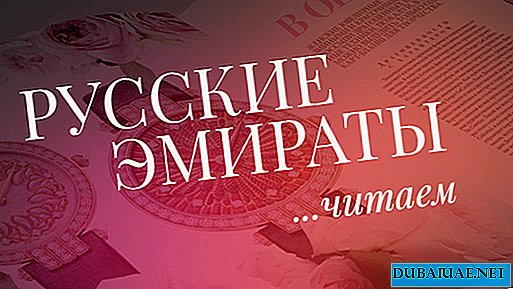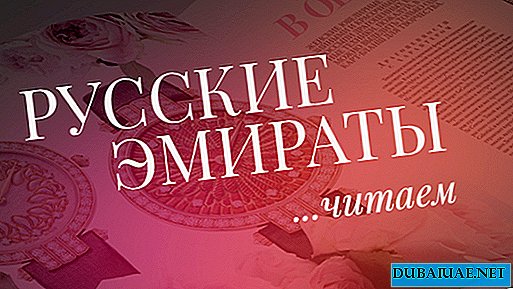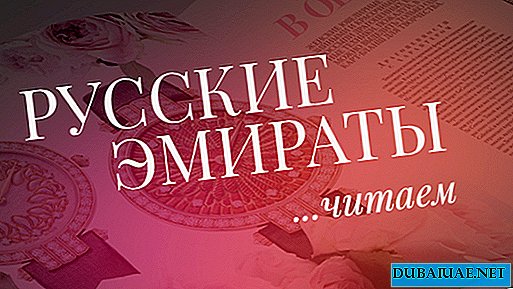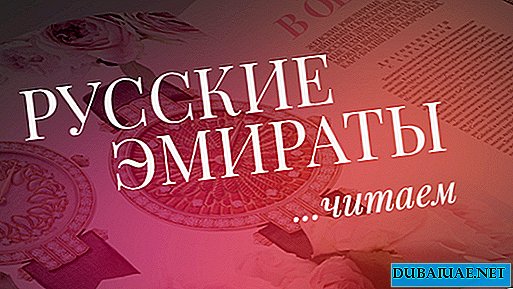 In 1777, Samuel Johnson said: "If you are tired of London, then you are tired of living, because there is everything you can expect from life" ... And today he would recognize many places in the city, spread out on the banks of the Thames, flowing from Hamton - Courts and Parliament buildings to the Cathedral of St. Paul and the Tower, and further - to Greenwich and the sea.
In 1777, Samuel Johnson said: "If you are tired of London, then you are tired of living, because there is everything you can expect from life" ... And today he would recognize many places in the city, spread out on the banks of the Thames, flowing from Hamton - Courts and Parliament buildings to the Cathedral of St. Paul and the Tower, and further - to Greenwich and the sea.
When the writer Herbert Wells wrote in 1911: “For me, London is the most interesting, most beautiful, most amazing city in the world,” the era of horse-drawn carts and luxury of King Edward came to an end.
The twentieth century was already preparing to radically change the outlines of the city: skyscrapers in the City, the Central Post Office tower, the Arts Center on the south bank of the Thames and standing out against the backdrop of this Docklands - the business center of the twentieth century. However, London, which many call the "capital of the world," remained true to itself. Samuel Johnson could still drink coffee in Covent Garden or head to the church in the narrow alleys of the City, meeting passers-by in costumes reminiscent of the Middle Ages. Herbert Wells today could attend a debate in Parliament, go to a concert in Albert Hall, or listen to a military band in the Royal Park.
The sky of London ...
Today, London is a large international center and covers an area of 625 square miles. This is an amazing world that many foreign tourists see first from the windows of the aircraft, marveling at the bizarre bends of the Thames and the beauty of numerous bridges.
There, far below, millions of people live, living not only in the vicinity of the British capital, but also in small towns formerly considered areas of London, and Westminster, and large areas that have retained the features of their provincial past - Merylbon and Kensington, Hampstead and Highgent. Where the main streets and historical monuments recall London, which every generation discovers for itself.
The history of London, recorded in documents, dates back to the time when there was still a swamp on the site of Westminster. The Romans settled on the territory of the modern City district in the 60s A.D., built a bridge across the Thames and created the famous commercial center, which attracted many merchants from different countries. The value of Westminster, which was originally built as a royal palace, began to increase after it was made the seat of government.
 About palaces, watches and monarchs
About palaces, watches and monarchs
Big Ben - the "voice" of London, shows the exact time GMT since 1859. Why is this clock with a bell called Big Ben? There are two versions. It is possible that they were named after the Welshman, Sir Benjamin Hall, who was in charge of construction at the time. According to another version, the name was given by the workers who transported the bell from the Whitechapel foundry in a cart harnessed by 16 white horses. The hero of those days was heavy boxer Benjamin Cadlet, and his name could well be assigned to the watch. And the author of the project of the watch - Sir Edmund Grimtorn, and their architect and designer suffered a sad fate - they died before a bell weighing 13.5 tons was installed on the tower behind four clock faces, each of which is 23 meters in diameter. By the way, the first huge bell cracked and was cast again, it cracked a second time, and now it continues to issue its famous, slightly cracked ringing.
Next to Parliament is Westminster Abbey, whose beauty was created by members of the royal dynasty of different generations. The abbey was founded in 960 A.D. and is an active temple - a place of Christian worship. This is the place of coronation of the English monarchs. The abbey demonstrates the noble, military, political, aristocratic history of England. Here are the burials of members of the royal family, scientists and artists, political and church officials. Today, there are about 120 burials of writers, poets, actors, musicians, scientists and politicians. Sir Winston Churchill, Franklin D. Roosevelt, Isaac Newton, Charles Darwin and other famous people are buried near the tomb of the Unknown Soldier. The black and white cobblestone platform and the elevation in front of the main altar is the venue for coronations and farewell ceremonies. Here Princess Diana of Wales and her Majesty the Queen Mother were escorted on their last journey. A choir sings here daily and at certain times.
At the very beginning of Mall Street, a view of Buckingham Palace - the "study" of the British monarchy. The palace was built by architect John Nash. The construction cost reached £ 700,000 through the use of 500 blocks of the most expensive and sophisticated veined Karrak marble. The personal apartments of Queen Elizabeth II and the Duke of Edinburgh are now located in the north wing of the building, whose windows overlook Green Park. You can visit the palace only 2 months a year - in the summer, when the queen is resting in the mountains of Scotland. About 30 thousand guests visit this palace annually and take part in receptions in the royal garden, where there is a lake and waterfalls. Pictures of natural nature are complemented by flamingo birds, the peace of which is not disturbed even by royal helicopters circling over the garden.
Many royal ceremonies begin from here, for example, the state opening of parliamentary sessions in the fall or the Truping de Color ceremony in honor of the Queen’s birthday in June. This year Queen Elizabeth II turned 80 years old. In honor of this date, visitors to the palace could admire the collection of the Queen’s 80 best outfits, as well as Her Majesty’s jewelry of more than 3,000 carats. The royal stables with horses, sumptuous blankets, a magnificent state carriage, painted by the Italian artist Cipriani, and more modern carriages are also open to the public.
Buckingham Palace is one of the most recognizable buildings in the world. Like the Parliament Building and the double-decker bus, it is the international symbol of London, and in a broader sense, the symbol of the United Kingdom as a whole. It forms the center of London, the very form and appearance of which is the result of time-honored ceremonial functions. But unlike many of the most famous buildings of the capital, it is not a museum. The Palace is the governing body of the governing monarchy, where Her Majesty the Queen performs her official and ceremonial duties as head of state. The Queen spends a working week at Buckingham Palace, weekends at Windsor Castle.
Government, the judiciary and the armed forces act on behalf of the Queen, and the monarch is the main symbol of the unity of the nation. The Queen is constantly in the know about what is happening in the country and every week when the Parliament sits, the Prime Minister (who have already changed eleven during the current reign) receives a personal audience in Buckingham Palace. The queen retains certain "prerogatives" of power, which include the appointment of a prime minister and the dissolution of Parliament.
 About parks, theaters and galleries
About parks, theaters and galleries
The center of cultural life in London is the Royal Albert Hall, which was laid down by Queen Victoria in 1868. Designed for 7,000 seats, it is oval in shape, covered with a glass and steel dome and rises to a height of 135 feet. Royal Albert Hall is famous for its magnificent acoustics and organ, the sound of which is provided by nine thousand pipes. On the opposite side of the Albert Hall in Graypark is a monument to Albert, the work of architect D. Scott, who was knighted for his skill. The monument was erected in 1876. Exactly 100 years later, the British festival made the royal hall the center of cultural life of the capital. Around the concert hall, the Arts Center, consisting of Queen Elizabeth Hall, Purcell Hall, Hayward Galleries, the National Theater and the Cinema Theater, arose.
In 1982, the Queen opened the Barbican Center, worth 153 million pounds, in the London area of the City. The Barbican became the venue for the concerts of the London Symphony Orchestra and the performances of the Royal Shakespeare Theater.
At the Madame Tussauds Wax Museum in Marylbones, you will meet with famous and notorious personalities, with the queen of the family and pop stars, and in the Horror Room with executioners who crack down on their victims.
London's Royal Parks - St. James's Park, Green Park, Hyde Park, Kensington Gardens, Regency Park - are the "lungs" of central London. On the shores of the lakes there are cafes and art salons, orchestras play, horseback rides are made on Rotten Row, boats transport those who wish through Serpentine, and in summer, performances are held at the open theater.
Piccadilly Circus was founded in 1819. This is a favorite meeting place for Londoners and tourists. There is always a joyful and festive atmosphere. A monument to the legendary Admiral Nelson, the winner of the Battle of Trafalgar in 1805, was erected on Trafalgar Square. The National Gallery and White Hall are also located here. In the area popular among Londoners, there are always many pigeons. Every year a Christmas tree is sent here from Norway, around which thousands of people gather to celebrate their favorite holiday.
Soho - the birthplace of striptease, film studios and international culinary art - is located near the district of theaters and has a rich history and cultural traditions. Now in this area is a whole Chinatown, and restaurants offer culinary art from around the world. The Opera House - Covent Garden, where the artists of the Royal Opera and Ballet perform, is the third theater building in this place. It was built by architect Berry in 1858 and has expanded and been upset over the past 10 years. Currently, the opera house is famous for its magnificent productions and the best actors in the world.
 Down the river
Down the river
The Thames, which is called the "water history" and the "most noble river of Europe" is decorated with many bridges and tunnels. Before the Westminster Bridge opened in 1750, the London Bridge was the only "crossing" across the Thames. The beauty of the bridges and the Thames flow are fascinating. Here is the world's largest Ferris wheel "London Eye", from which in just 24 minutes you can see the unique beauty of London and its environs within a radius of 40 km. The Cleopatra's Needle brought from Egypt is installed on the Thames embankment.
Tower Bridge leads to the Tower of London. In a book dedicated to the 900th anniversary of the Tower, the Duke of Edinburgh wrote that "Throughout its history, the Tower of London has been a fortress, and a repository of royal jewels and a national treasury, and an arsenal, and a mint, and a prison, and an observatory, and a zoo, and a tourist attraction. " Today, the Tower has retained its traditional features, beginning with the clothing of beefeaters (guard soldiers) and ending with the night Key Ceremony, famous for its magnificent productions of the Thames, which is called the “water history” and “the most noble river of Europe”, decorated with many bridges and tunnels. Before the Westminster Bridge opened in 1750, the London Bridge was the only "crossing" across the Thames. The beauty of the bridges and the Thames flow are fascinating. Here is the world's largest Ferris wheel "London Eye", from which in just 24 minutes you can see the unique beauty of London and its environs within a radius of 40 km. The Tower Bridge leads to the Tower of London on the Thames embankment. In a book dedicated to the 900th anniversary of the Tower, the Duke of Edinburgh wrote that "in its history, the Tower of London has been both a fortress and a repository of royal jewels and a national destination that attracts tourists." Today, the Tower has retained its traditional features, starting with the clothing of the bifiter (guard soldier) and ending with the time that the head of the Guards, Ioman, dressed in a long red cloak and takes the Tudors, carries a flashlight in the direction of the Blood Tower. Most royal jewels are kept here. Among them - the crown of St. Edward weighing about 5 pounds, the crown of the Imperial State, decorated with a ruby "Black Prince".
In the subway and - for shopping ...
In London, it is logical to make all kinds of purchases. Today London's Harrods department store is one of the most famous and luxurious stores in the world where you can buy everything from a piano to a thoroughbred puppy. The gastronomic department is especially popular here. London has the largest metro in the world, the first line of which was opened in 1863, and the famous double-decker buses (omnibuses) have been running around the city since 1850. The story of London can be continued for a very long time ...
I am happy that I was able to get in touch with the history and culture of the great city of the world, created by architects, artists, poets, writers, musicians, artists, politicians and ordinary people. Being in the atmosphere of magnificent buildings, palaces, squares, museums, theaters, monuments, surrounded by parks, squares, gardens, lakes, and the famous Thames, breathing in the scents in the air and enjoying all this, you think only about one thing: "Life is the most beautiful that given to us. "
Tatyana Peschanskaya









